
World Hearing Day shines light on global hearing loss

Air Force Senior Airman Joseph Finigan, 100th Aircraft Maintenance Squadron aircraft hydraulics systems journeyman, puts on a second layer of hearing protection over his dual in-ear headset at RAF Mildenhall, England. The headset enables communication by transmitting sound waves through the bones in the user's ear. (U.S. Air Force photo by Airman 1st Class Joseph Barron)
SAN ANTONIO — The World Health Organization estimates 466 million people have disabling hearing loss. By 2050, that figure will almost double, affecting one in 10 people.
To raise awareness about hearing loss and why hearing health care is important, the World Health Organization designated March 3 as World Hearing Day.
For service members, noise-induced hearing loss from exposure to hazardous noise on and off-duty is the most common type of hearing injury. According to the Department of Veterans Affairs, noise-induced hearing loss and tinnitus (ringing, buzzing and other sound in the ears) continue to be one of the most prevalent service-connected disabilities experienced by veterans.
However, that trend is shifting. Each of the military services administers a hearing conservation program, and coupled with the Department of Defense Hearing Center of Excellence, Comprehensive Hearing Health Program, are helping to reduce noise-induced hearing loss among active-duty service members, according to Dr. Theresa Schulz, the center’s prevention branch chief.
“For service members and civilians enrolled in hearing conservation programs, hearing health is improving in the Department of Defense. Evidence of this is seen in an overall decrease in hearing impairment for all DoD components,” said Schulz. “Service members with hearing impairment decreased from 21 percent in 2012 to 15 percent in 2018. The percent of civilians with hearing impairment decreased from 51 percent in 2012 to 40 percent in 2018.”
Schulz added, “The Comprehensive Hearing Health Program benefits all service members, regardless of occupation or specialty, because noise is the most prevalent hazardous exposure faced by our service members on duty, but a significant amount of exposure occurs off-duty. A primary goal of program is to bring visibility to an invisible but preventable injury – noise-induced hearing loss."
For the general population, the National Institutes of Health, National Institute on Deafness & Other Communication Disorders reports about 20 percent of American adults, age 20 to 69 have some trouble with hearing, and roughly 28.8 million could benefit from the use of hearing aids. Among adults age 20 to 69, only about 16 percent of those who would benefit from hearing aids has ever used them, according to NIDCD.
To highlight the prevalence of hearing loss and importance of effective interventions, this year’s World Hearing Day theme is, “Hearing for life: Don’t let hearing loss limit you”. The WHO emphasizes timely and effective interventions can ensure people with hearing loss are able to achieve their full potential, and interventions can facilitate access to education, employment and communication.
“Hearing is a critical sense, especially for service members who must be able to see, hear, and communicate in order to engage with their families, connect with their communities, and achieve their missions safely and effectively,” said Schulz. “Anyone suspecting a hearing issue should see an audiologist who will run a series of tests to determine the problem, if there is one, and then recommend treatment. And, it is even better to protect your hearing from hazardous noise on and off the job to prevent hearing problems from occurring.”
DHA PI 6025.12: Retiree At Cost Hearing Aid Program Retiree Hearing Aid Purchase Program (RACHAP)
Policy
This Defense Health Agency-Procedural Instruction (DHA-PI): a. Based on the authority of References (a) and (b), and in accordance with the guidance of References (c) through (r), establishes the Defense Health Agency’s (DHA) procedures to establish common and uniform guidelines, standards, and procedures for all DoD MTFs providing hearing health services to beneficiaries through RACHAP. This program has been operating at self-selected MTFs without established DoD guidance. b. Enables MTFs with capacity and capability to provide hearing aid evaluation, selection, fitting, and follow-up appointments utilizing an at cost Federal Government contract price through RACHAP to RACHAP-eligible beneficiaries (“RACHAP-eligible beneficiaries” defined in the Glossary). c. Incorporates, cancels, and replaces Reference (s).
- Identification #: 6025.12
- Date: 7/12/2019
- Type: DHA Procedural Instruction
- Topics: Hearing Loss
Defense Occupational and Environmental Health Readiness System – Hearing Conservation (DOEHRS-HC)
Fact Sheet
6/17/2019
The Defense Occupational and Environmental Health Readiness System – Hearing Conservation (DOEHRS-HC) is an information system designed to support personal auditory readiness and help prevent hearing loss through early detection.
Combatting hearing loss remains top priority
Article
5/22/2019
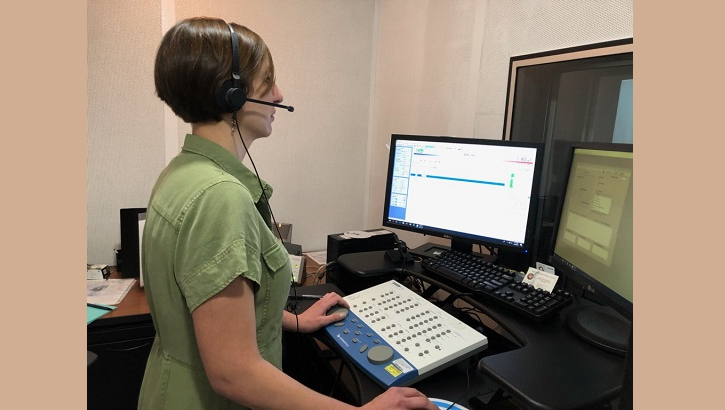
The DoD recognizes May as Better Hearing and Vision Month
A Soldier’s fight to regain the gift of hearing
Article
5/15/2019

Schweitzer attributes his ability to hear to the world-class care he received at Walter Reed
Center continues quest to protect hearing, prevent damage
Article
10/26/2018
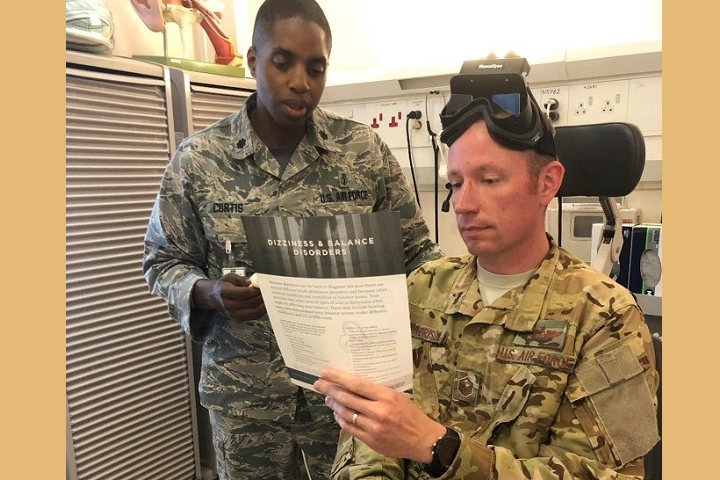
October is National Audiology Awareness Month
Noise impact on hearing loss
Article
9/20/2018

Hearing loss is the number one disability among veterans
Study examines impacts of noise and chemical exposure on hearing health
Article
9/13/2018
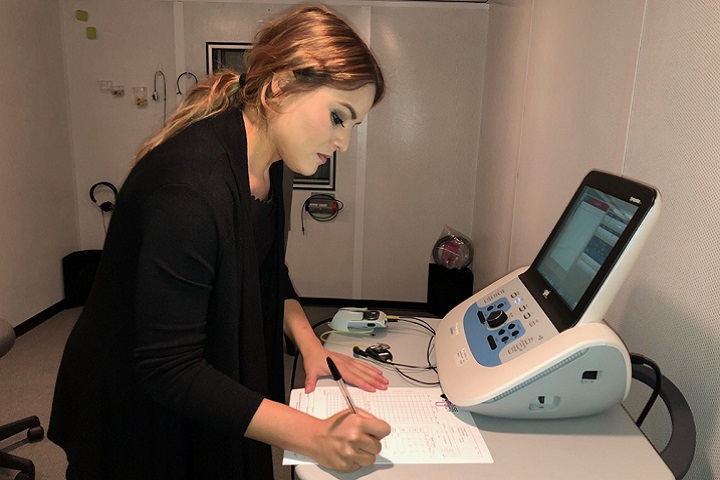
Exposure to certain chemicals, called ototoxicants, can cause hearing loss or balance problems
New course aims to reduce military hearing loss
Article
9/7/2018

Tinnitus and hearing loss have remained among the top disabilities of veterans
Battlespace acoustics branch protects hearing, human performance
Article
8/17/2018
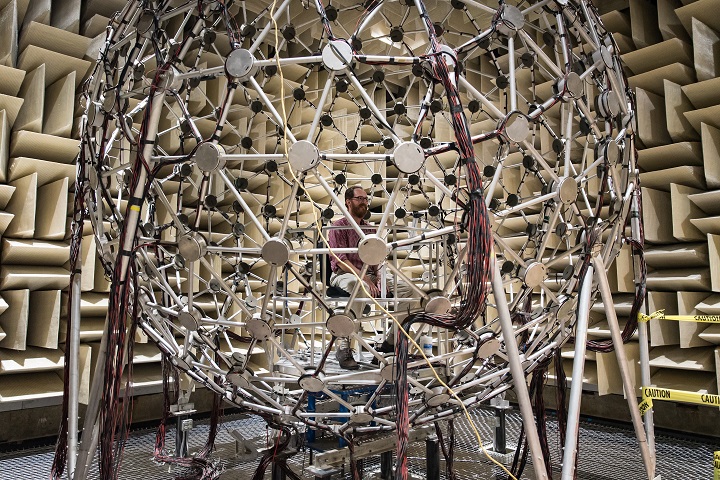
We look at how noise is being generated, how it propagates, and what that means for Airmen in the field
Air Force NCO resumes career after tumor, hearing loss
Article
5/16/2018
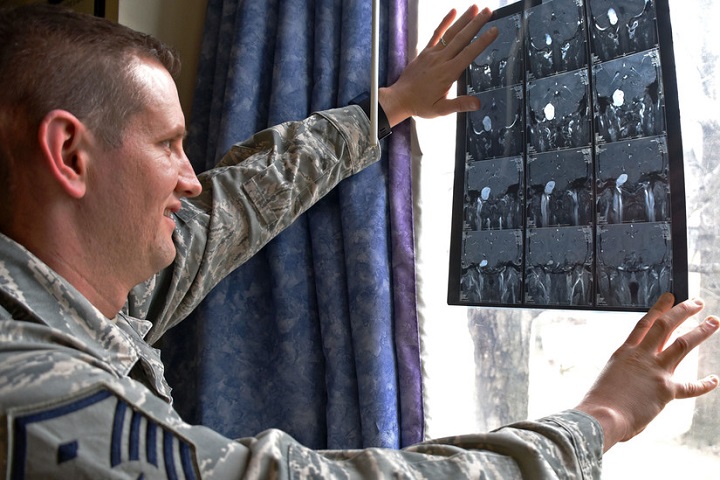
He had the constant feeling of water in his ear – he knew something was wrong
Dedicated audiologists use clever tools to combat hearing loss
Article
5/11/2018
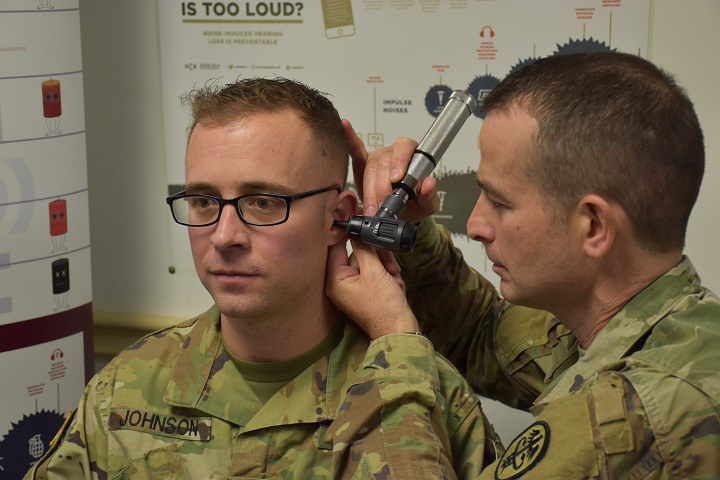
Hearing loss and tinnitus have steadily increased over the last two decades among Veterans
Research network works to combat number one disability claim among veterans
Article
5/4/2018
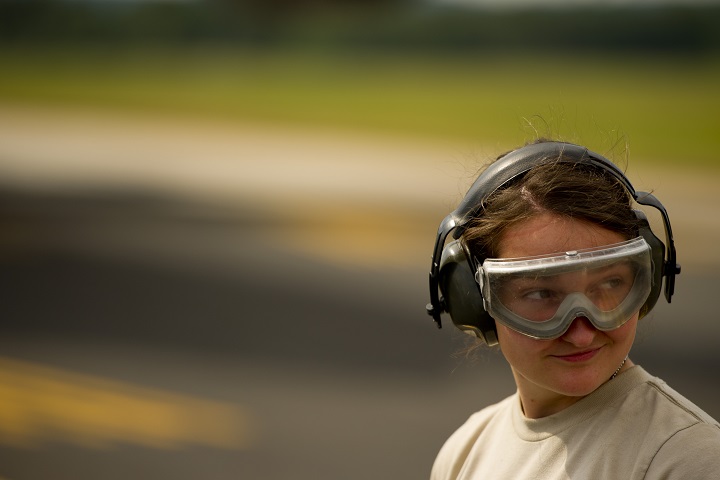
Noise brings the potential of hearing loss if proper personal protective hearing equipment is not available or utilized
Traumatic Brain Injury and the Art of Paddling
Article
3/7/2018

A U.S. Army veteran’s recipe for embracing life after several TBIs
Exiting an A-10C Thunderbolt
Photo
9/30/2016

U.S. Air Force Senior Airman Judith Bulkley, an electrical and environmental systems specialist deployed from the 23rd Aircraft Maintenance Squadron, Moody Air Force Base, Ga., exits an A-10C Thunderbolt II after performing an external power operations check on the aircraft at Kandahar Airfield, Afghanistan. Because service members in particular are often exposed to high noise levels, hearing protection is crucial, especially with a TBI. (U.S. Air Force photo by Tech. Sgt. Stephen Schester)
Lt. Col. James Morrison getting adjustments to cochlear implant
Photo
9/22/2016
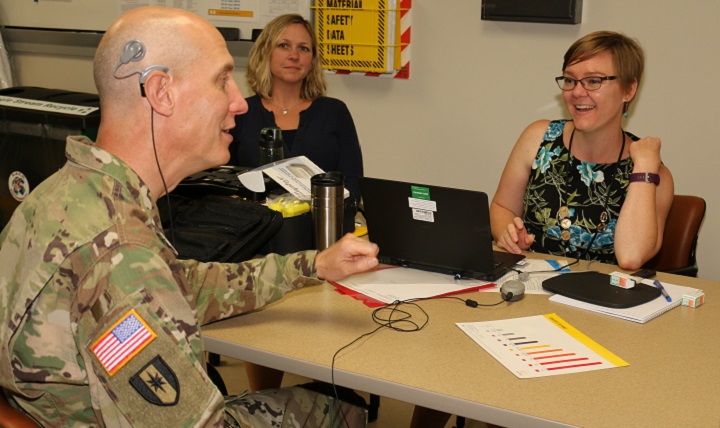
Dr. Elizabeth Searing (right) makes initial adjustments via a computer to Lt. Col. James Morrison's cochlear implant. Dr. April Luxner, an audiologist with Cochlear Corporation, was on hand to witness Morrison's reactions to hearing with his right ear after 12 years of deafness. (U.S. Army photo by Jeff Troth)





















.jpg)












No hay comentarios:
Publicar un comentario